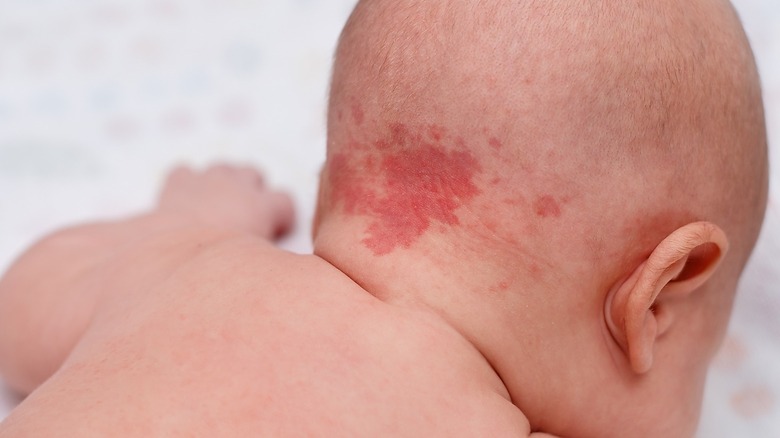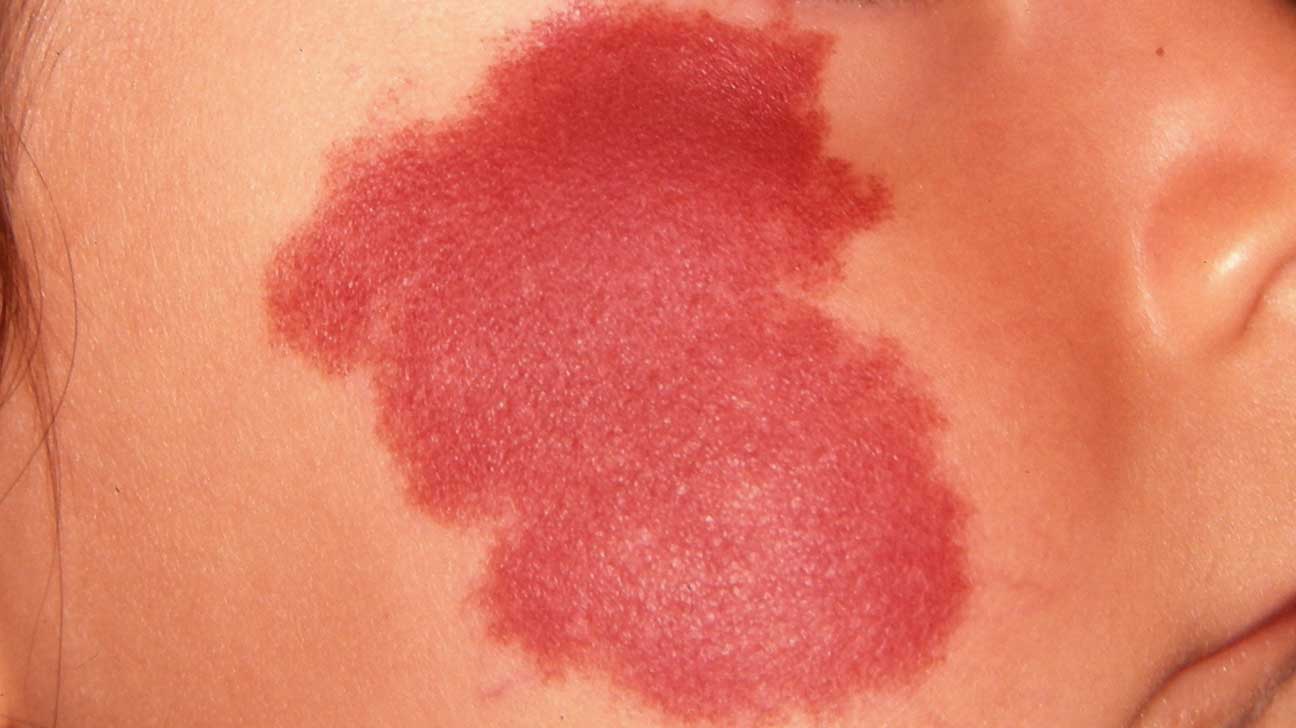What is a strawberry nevus ?
STRAWBERRY NEVUS :
Though it’s called a birthmark, a strawberry nevus doesn’t always appear at birth. The mark can also appear when a child is several weeks old. They’re usually harmless and typically fade by the time a child reaches age 10. If it doesn’t fade, removal options are available to minimize the birthmark’s appearance.
WHAT ARE THE SIGNS AND SYMPTOMS OF STRAWBERRY NEVUS ?
The birthmark can be anywhere, but the most common locations are the:
- face
- scalp
- back
- chest
If you look closely at the area, you may see small blood vessels closely packed together.
It can resemble a number of other types of red birthmarks. They’re the most common skin growth in infants, affecting about 1 out of 10 children, estimates Cincinnati Children’s Hospital.
A strawberry nevus can be superficial, deep, or combined:
- Superficial hemangiomas can be even with your child’s skin or raised. They’re usually bright red.
- Deep hemangiomas take up space in deeper tissue. They often appear blue or purple. They’re also known as cavernous hemangiomas.
- Combined hemangiomas are a mixture of both superficial and deep. A port-wine stain (a red or purple birthmark) differs from a strawberry nevus because port-wine stains typically occur on the face and are permanent.
A strawberry nevus will appear when extra blood vessels cluster together. The cause of this is unknown.
There are rare cases of several family members having hemangiomas in which genetics is assumed to play a role. Research is ongoing as to the exact cause of these skin lesions.
RISK FACTORS / SIDE EFFECTS :
In the most severe cases, large hemangiomas can be life-threatening. A large nevus can cause problems and deformities of the skin. It can affect breathing, vision, and hearing as well.
Depending on their location, large hemangiomas can also complicate organ function. It’s important for a doctor to evaluate the size of the hemangioma and perform tests to determine if it’s harmful or not. A strawberry nevus is rarely harmful. Some can leave behind a gray or white scar as they fade. This can make the area noticeably different from the surrounding skin.
HOW IS A STRAWBERRY NEVUS DIAGNOSIS ?
If your child’s doctor suspects that the mark is deep or close to a major organ, they may need to remove it. This typically requires care at a specialty medical center.
Tests to determine a hemangioma’s depth may include:
- Biopsy (tissue removal)
- CT SCAN
- MRI scan
Treatment isn’t necessarily recommended since most strawberry nevus marks aren’t harmful and fade with time.
The U.S. Food and Drug Administration approved propranolol hydrochloride (Hemangeol) in 2014 as the first oral medication to treat hemangiomas in children. However, the drug does come with side effects, such as sleep problems and diarrhea.
If needed, treatments for a strawberry nevus include:
- topical, oral, or injected medications
- laser treatments
- surgery
These procedures are performed by a medical professional who has experience treating hemangiomas. Consult with your doctor to see if your child is a candidate for any of these treatments. Side effects of these procedures can include scarring and pain as the removed tissue heals.
In cases of large and deep hemangiomas, a surgeon may need to remove the entire nevus. This is important in cases where the hemangioma may injure other tissues or organs.




Comments
Post a Comment